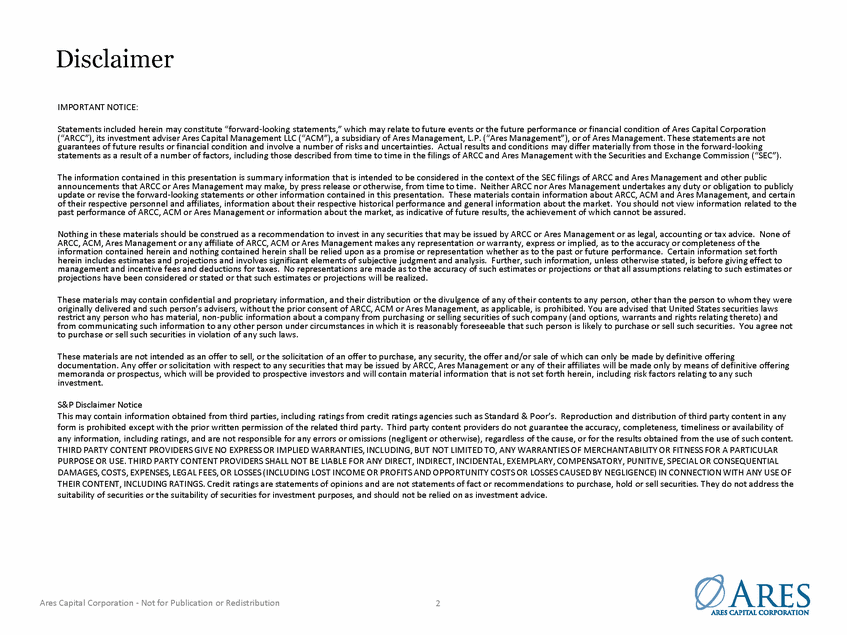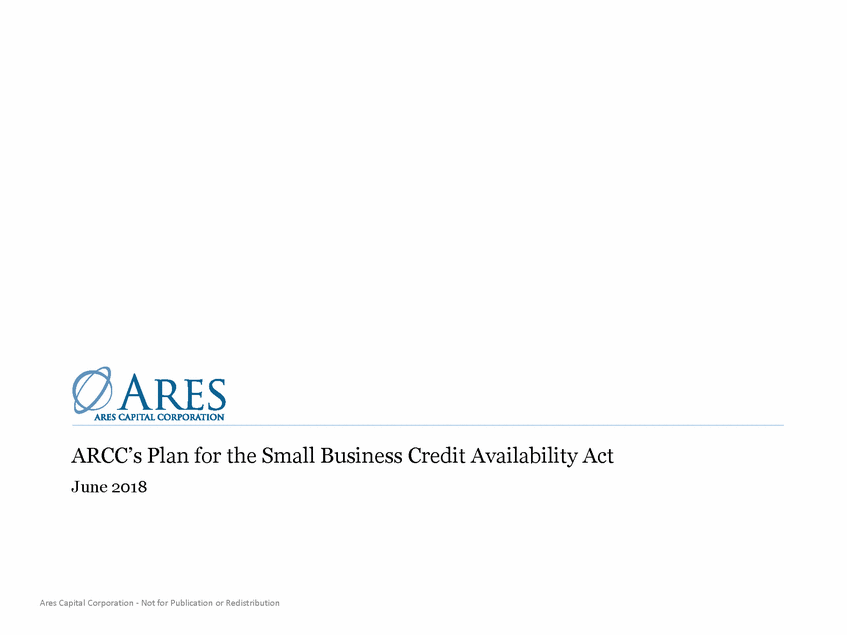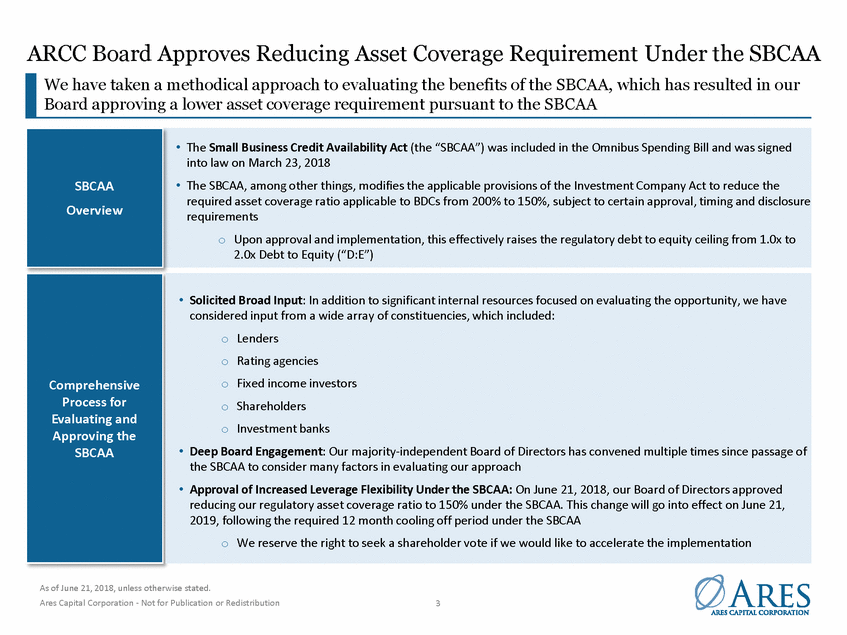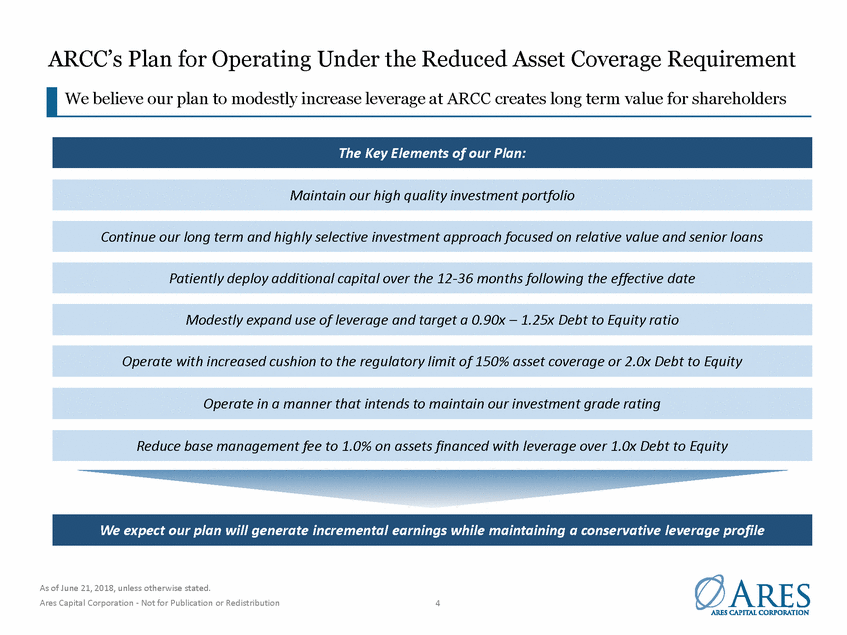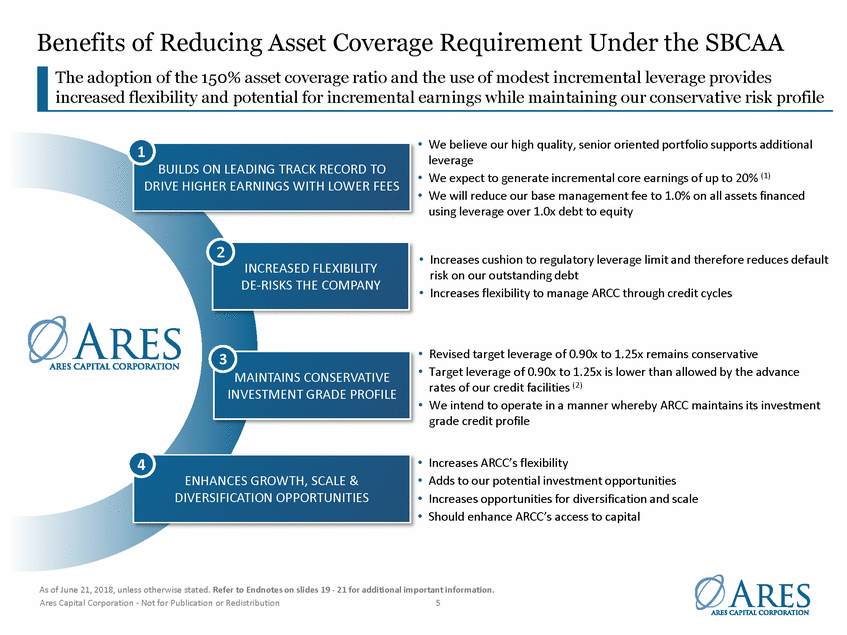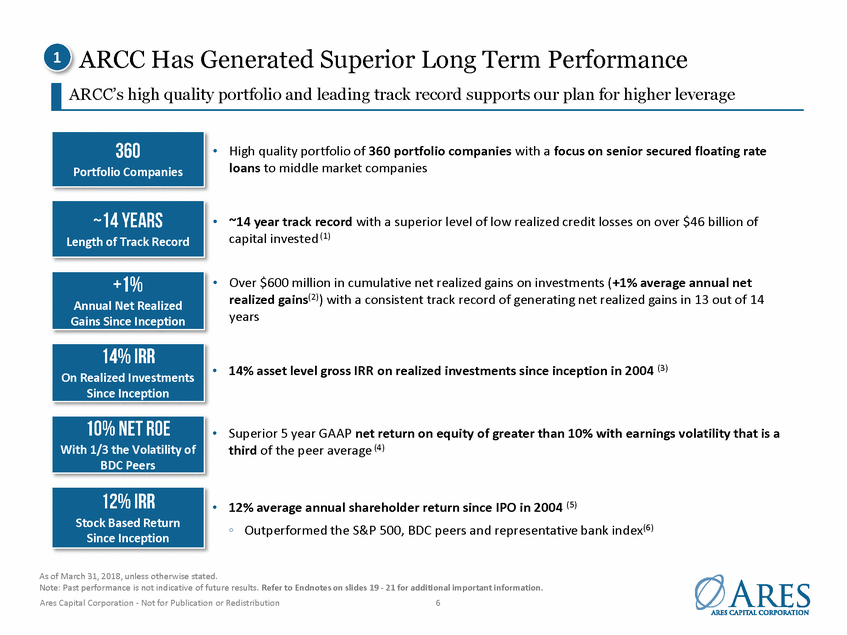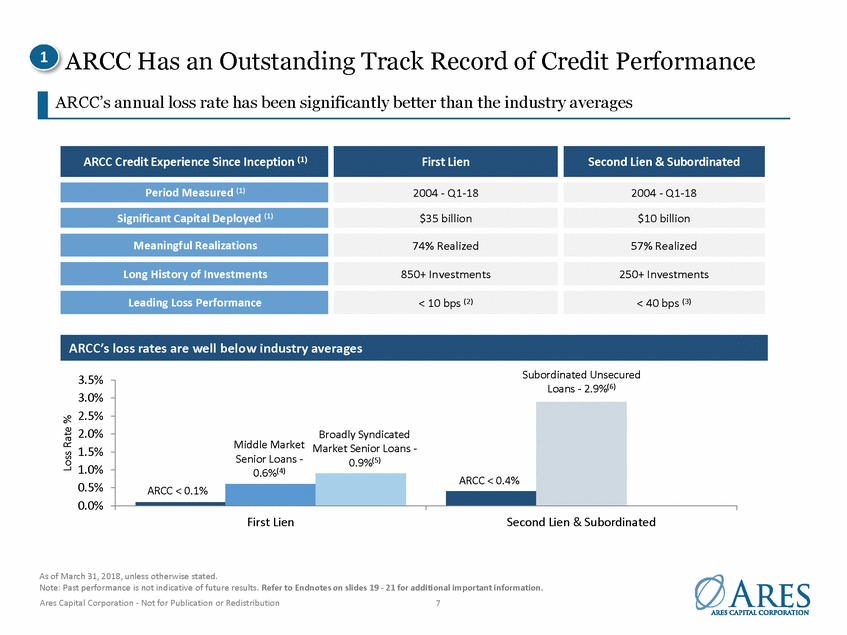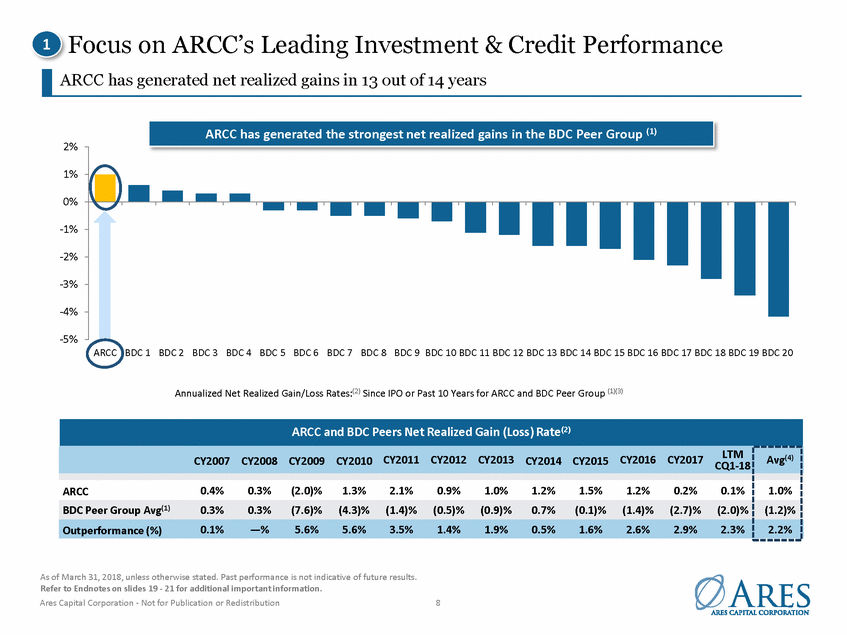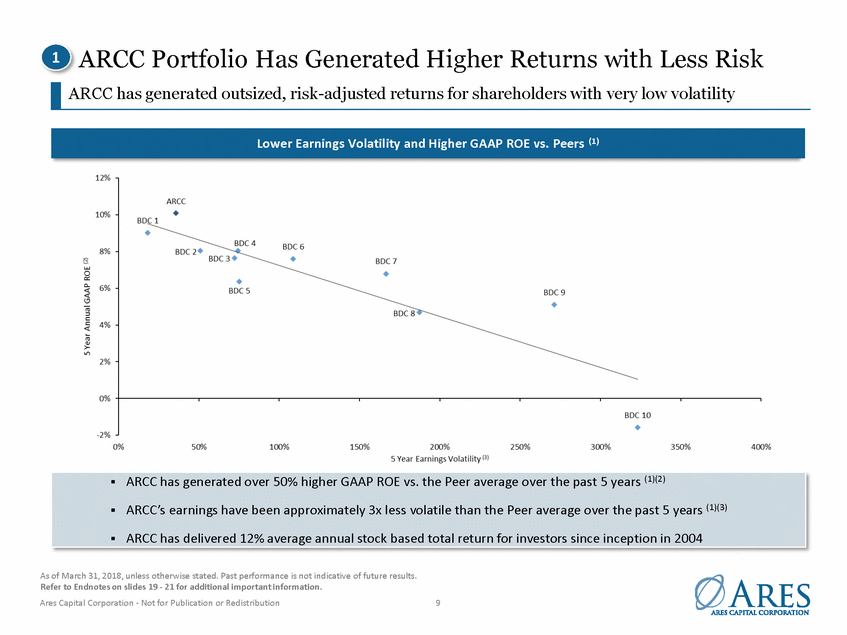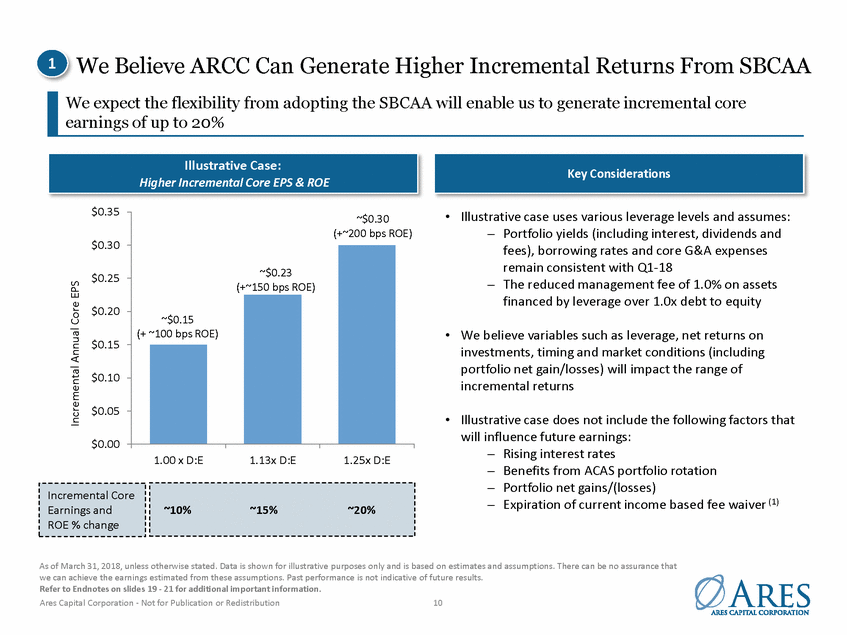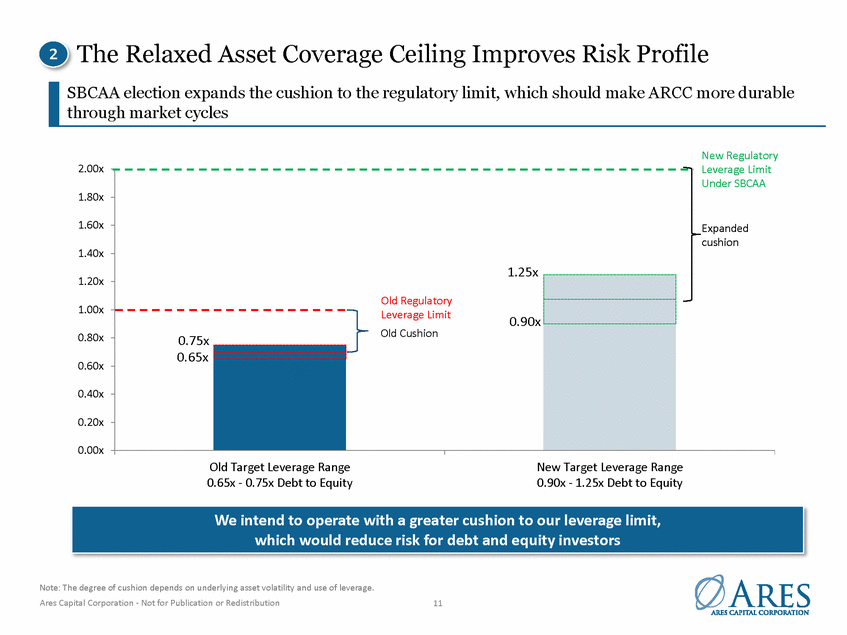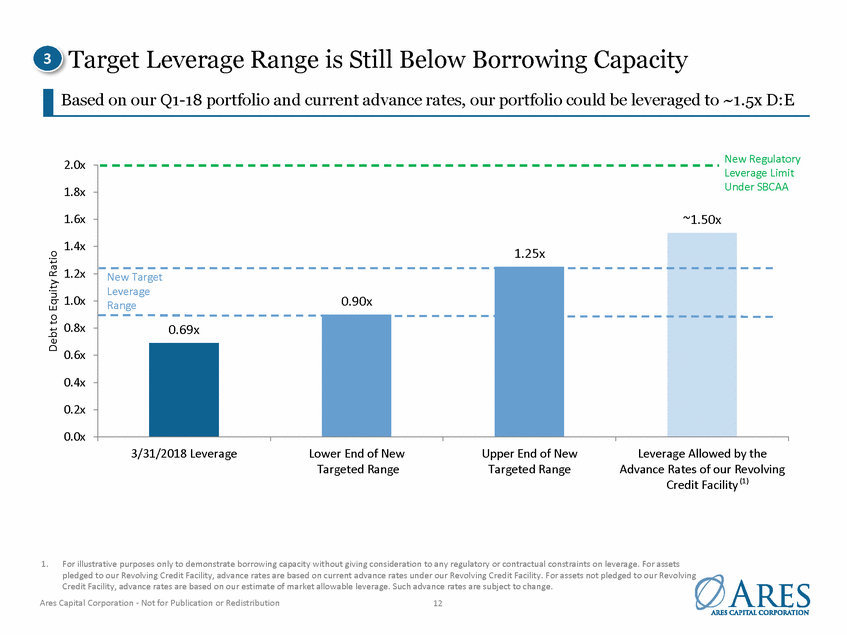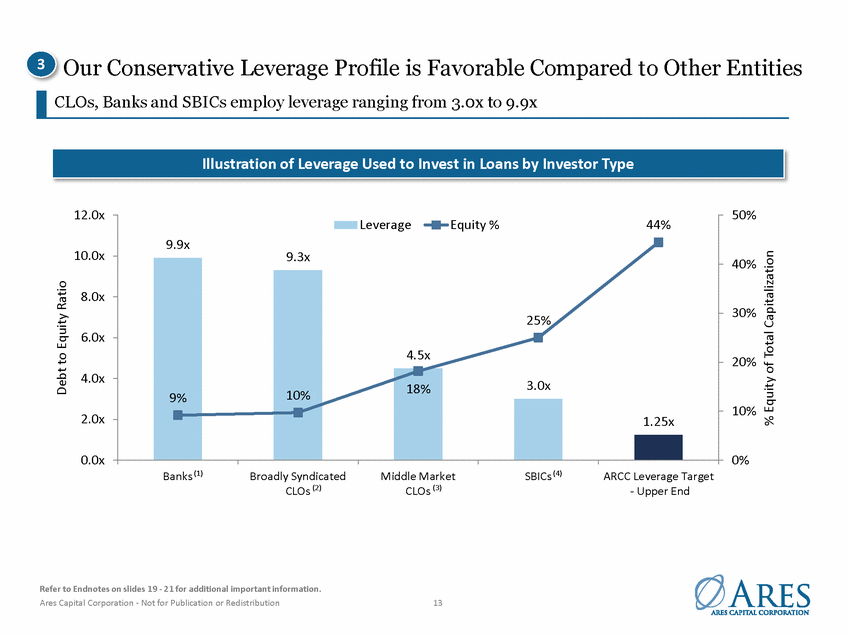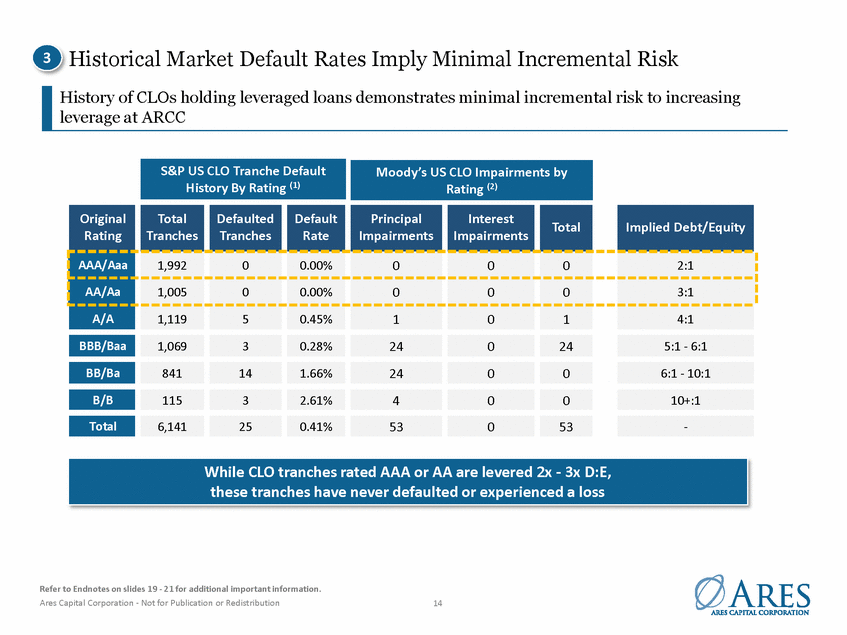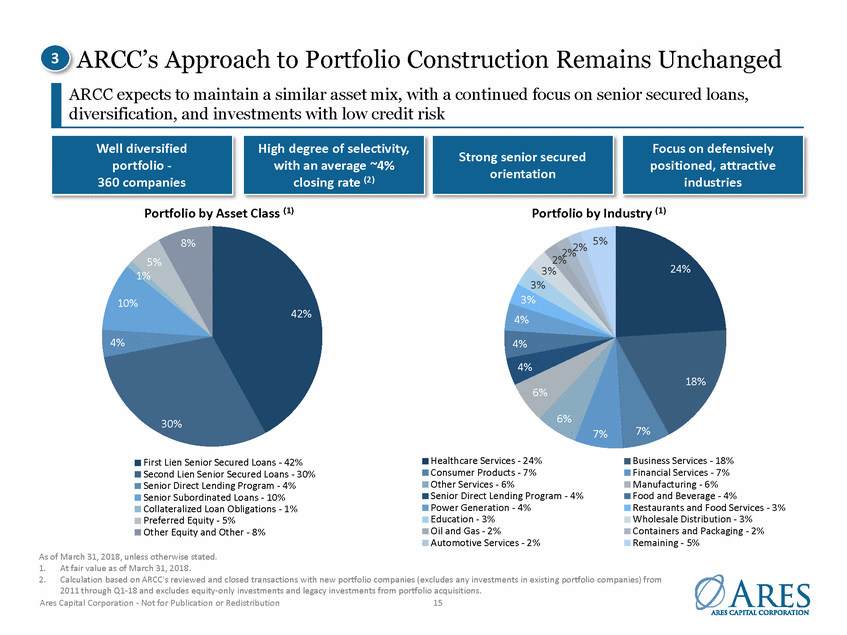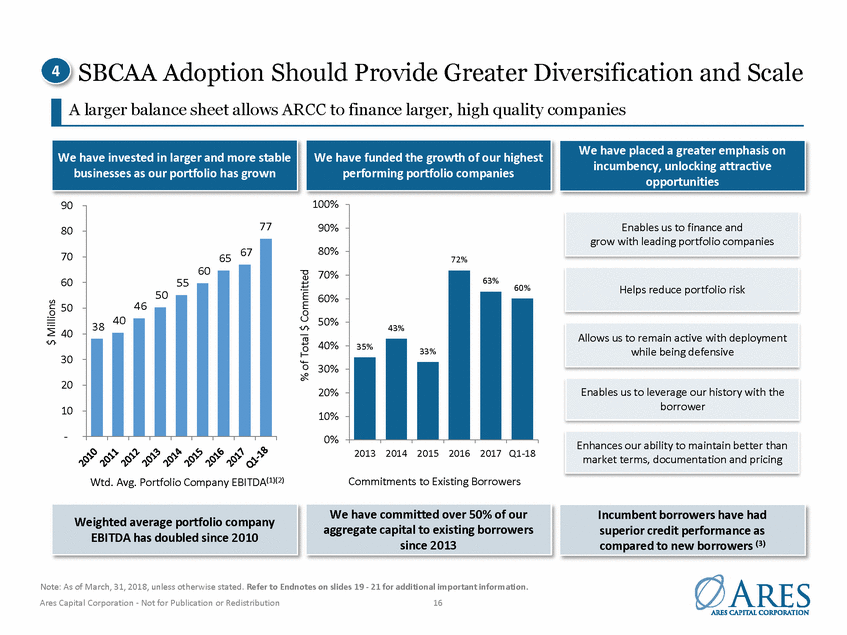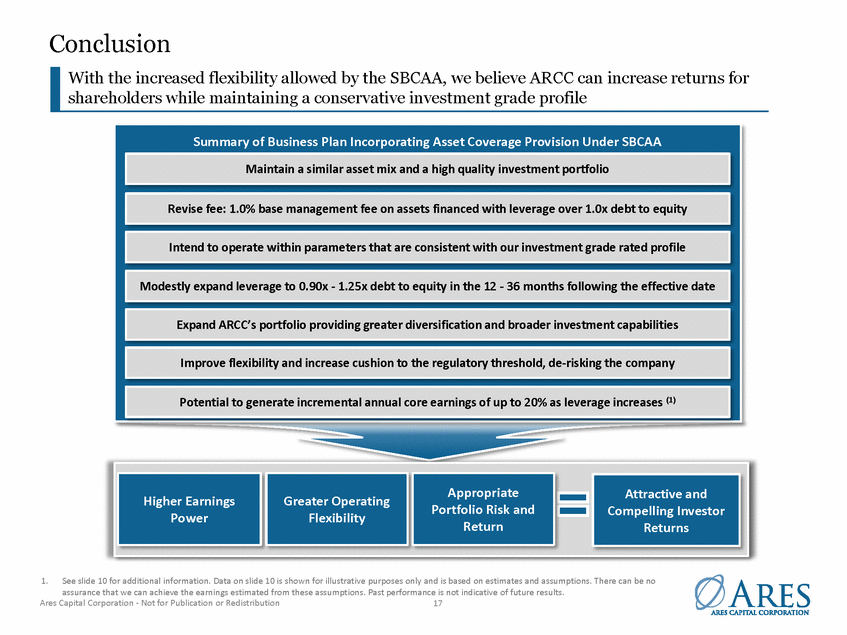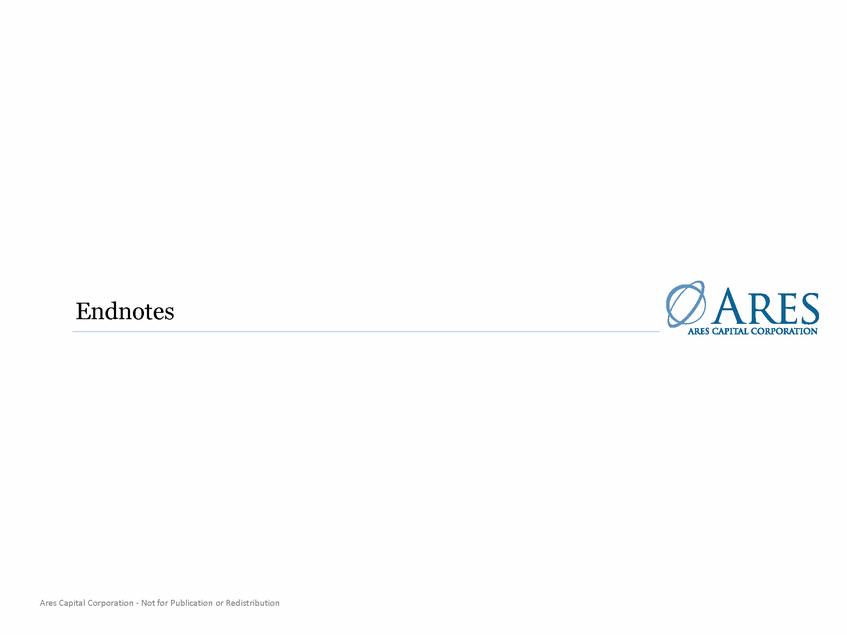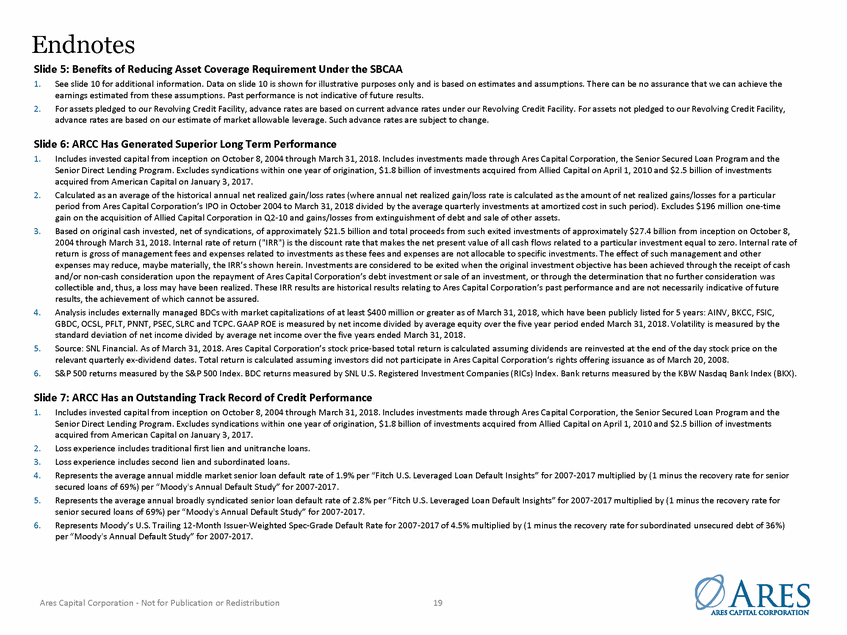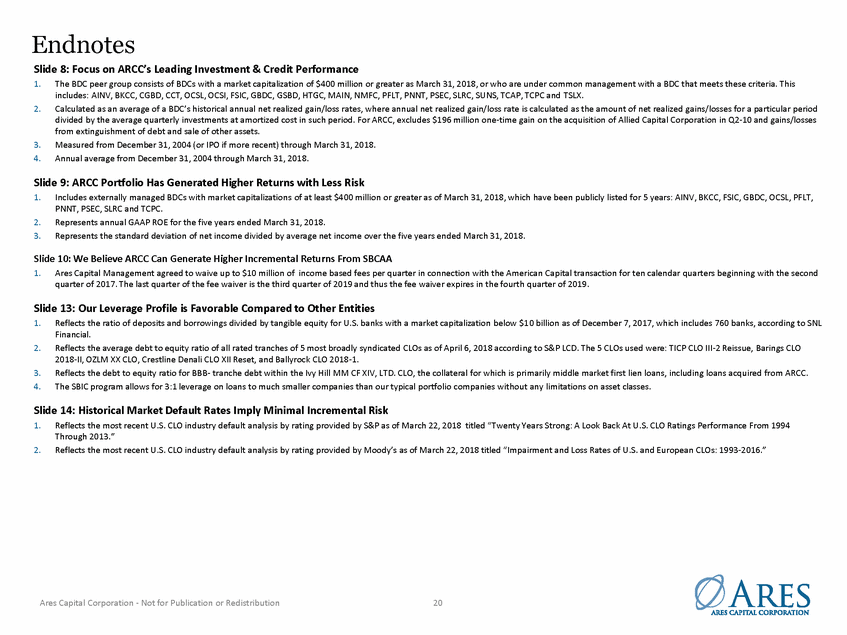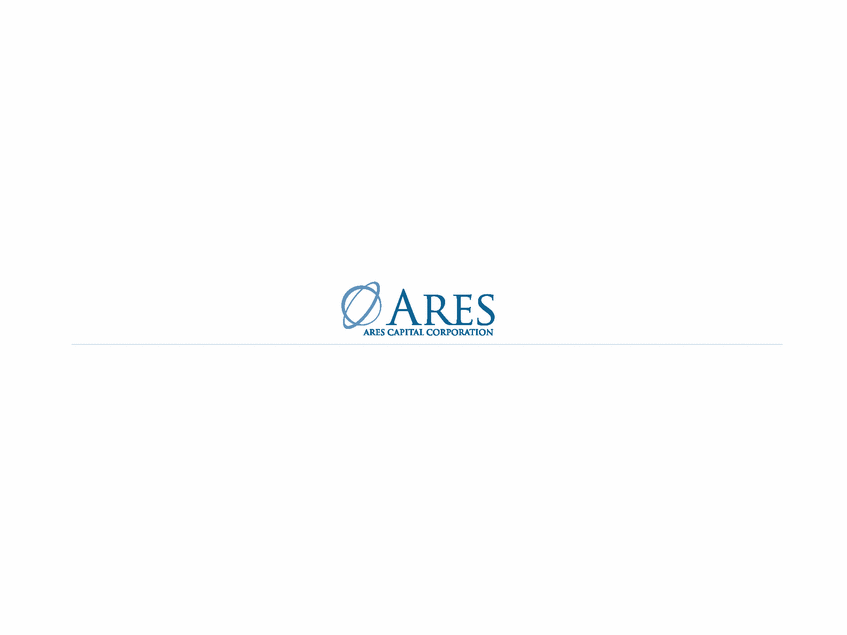Disclaimer IMPORTANT NOTICE: Statements included herein may constitute “forward-looking statements,” which may relate to future events or the future performance or financial condition of Ares Capital Corporation (“ARCC”), its investment adviser Ares Capital Management LLC (“ACM”), a subsidiary of Ares Management, L.P. (“Ares Management”), or of Ares Management. These statements are not guarantees of future results or financial condition and involve a number of risks and uncertainties. Actual results and conditions may differ materially from those in the forward-looking statements as a result of a number of factors, including those described from time to time in the filings of ARCC and Ares Management with the Securities and Exchange Commission (“SEC”). The information contained in this presentation is summary information that is intended to be considered in the context of the SEC filings of ARCC and Ares Management and other public announcements that ARCC or Ares Management may make, by press release or otherwise, from time to time. Neither ARCC nor Ares Management undertakes any duty or obligation to publicly update or revise the forward-looking statements or other information contained in this presentation. These materials contain information about ARCC, ACM and Ares Management, and certain of their respective personnel and affiliates, information about their respective historical performance and general information about the market. You should not view information related to the past performance of ARCC, ACM or Ares Management or information about the market, as indicative of future results, the achievement of which cannot be assured. Nothing in these materials should be construed as a recommendation to invest in any securities that may be issued by ARCC or Ares Management or as legal, accounting or tax advice. None of ARCC, ACM, Ares Management or any affiliate of ARCC, ACM or Ares Management makes any representation or warranty, express or implied, as to the accuracy or completeness of the information contained herein and nothing contained herein shall be relied upon as a promise or representation whether as to the past or future performance. Certain information set forth herein includes estimates and projections and involves significant elements of subjective judgment and analysis. Further, such information, unless otherwise stated, is before giving effect to management and incentive fees and deductions for taxes. No representations are made as to the accuracy of such estimates or projections or that all assumptions relating to such estimates or projections have been considered or stated or that such estimates or projections will be realized. These materials may contain confidential and proprietary information, and their distribution or the divulgence of any of their contents to any person, other than the person to whom they were originally delivered and such person’s advisers, without the prior consent of ARCC, ACM or Ares Management, as applicable, is prohibited. You are advised that United States securities laws restrict any person who has material, non-public information about a company from purchasing or selling securities of such company (and options, warrants and rights relating thereto) and from communicating such information to any other person under circumstances in which it is reasonably foreseeable that such person is likely to purchase or sell such securities. You agree not to purchase or sell such securities in violation of any such laws. These materials are not intended as an offer to sell, or the solicitation of an offer to purchase, any security, the offer and/or sale of which can only be made by definitive offering documentation. Any offer or solicitation with respect to any securities that may be issued by ARCC, Ares Management or any of their affiliates will be made only by means of definitive offering memoranda or prospectus, which will be provided to prospective investors and will contain material information that is not set forth herein, including risk factors relating to any such investment. S&P Disclaimer Notice This may contain information obtained from third parties, including ratings from credit ratings agencies such as Standard & Poor’s. Reproduction and distribution of third party content in any form is prohibited except with the prior written permission of the related third party. Third party content providers do not guarantee the accuracy, completeness, timeliness or availability of any information, including ratings, and are not responsible for any errors or omissions (negligent or otherwise), regardless of the cause, or for the results obtained from the use of such content. THIRD PARTY CONTENT PROVIDERS GIVE NO EXPRESS OR IMPLIED WARRANTIES, INCLUDING, BUT NOT LIMITED TO, ANY WARRANTIES OF MERCHANTABILITY OR FITNESS FOR A PARTICULAR PURPOSE OR USE. THIRD PARTY CONTENT PROVIDERS SHALL NOT BE LIABLE FOR ANY DIRECT, INDIRECT, INCIDENTAL, EXEMPLARY, COMPENSATORY, PUNITIVE, SPECIAL OR CONSEQUENTIAL DAMAGES, COSTS, EXPENSES, LEGAL FEES, OR LOSSES (INCLUDING LOST INCOME OR PROFITS AND OPPORTUNITY COSTS OR LOSSES CAUSED BY NEGLIGENCE) IN CONNECTION WITH ANY USE OF THEIR CONTENT, INCLUDING RATINGS. Credit ratings are statements of opinions and are not statements of fact or recommendations to purchase, hold or sell securities. They do not address the suitability of securities or the suitability of securities for investment purposes, and should not be relied on as investment advice.
